“That propaganda is good which leads to success, and that is bad which fails to achieve the desired result.”
- Joseph Goebbels (1897-1945), Nazi Minister for Popular Enlightenment and Propaganda.
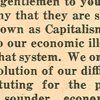 Canadian political parties once produced and distributed propaganda. That term which currently evokes the emotionally manipulative messages distributed by Fascist governments is no longer used by contemporary politicians for their own efforts, now commonly described as political marketing. Canadian political parties once produced and distributed propaganda. That term which currently evokes the emotionally manipulative messages distributed by Fascist governments is no longer used by contemporary politicians for their own efforts, now commonly described as political marketing.
The types of political advertising directed at voters are influenced by the characteristics of the voting population and the structure of the electoral system. Presently the right to vote is extended to almost all adult Canadian citizens. Women achieved the right to vote in provincial elections in all three prairie provinces in 1916 and in federal elections in 1918. Canadians of Asian origin were guaranteed voting rights in 1949. The federal franchise was extended without qualification to all Indian adults in 1960. For a number of cultural and structural reasons, Aboriginal citizens, the young and the poor are less likely to vote. Older Canadians, the better educated and the financially established are quite likely to vote and are thus especially targeted by political advertisers.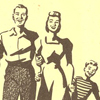
During general elections political parties run parallel campaigns at the national or provincial level and at the constituency level. Most parties poll to determine which issues resonate with the electorate and which party characteristics – leadership, record, or policies – might be best exploited in an electoral battle. Using this information a campaign is designed and advertising for various media prepared. Most campaigns include a published platform (or list of promises), a slogan and schedule of campaign literature branded with the party’s colours and symbols. Red, blue and orange are the colours traditionally used by the Liberal, Conservative and New Democratic Parties. 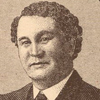
The nominated candidates represent the campaign in their local constituency. It is now unusual for a local party candidate to distribute advertising material that is not authorized, or prepared by the party. Often a page or two towards the end of a generic party pamphlet is devoted to the accomplishments, education and religious history of the local candidate and his or her family if the candidate is married. Lawn signs and billboards are also considered effective in familiarizing voters with local candidates.
Political advertising employs many of the same strategies employed in commercial marketing. These include the comparison and contrast of party records or platforms, the identification of a party with the goals and best interests of the ‘average’ citizen, and the attachment of moral values to the positions of the party. Some campaigns build support by instilling feelings of anxiety or fear of the opposition. When a party has an especially attractive leader, the campaign may be built around his or her accomplishments, charisma or standing. 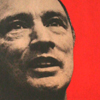
Volume and repetition are also emphasized. A chief goal in typically short Canadian campaigns is to get the same simple message heard in as many places and as often as possible – the aim being to reinforce the message and to drown out alternatives positions. Campaign managers may try to evoke a bandwagon effect to persuade voters to join what is presented as an irresistible mass movement.
Many critics have noted the pronounced negativity of contemporary political advertising. According to Canadian pollster Alan Gregg, “ Negative advertising, unsubstantiated allegations and character innuendo have not only become the norm in politics today, these tactics are now considered the most effective way of gaining political ground on your opponents.” Particularly prominent in current campaigns are ad hominem attacks - evoking fear or dislike of one’s opponents, as opposed to debating the merits of their arguments.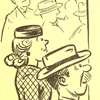
Also distinctive is the unencumbered freedom enjoyed by politicians in their promise making. Commercial advertisers are held to account for their advertising pitches. In contrast Canadian voters find little recourse when parties come to power and quickly renege on those campaign promises they find inconvenient, or when representatives jump to other parties soon after their election for ‘personal’ reasons.
The negativity of advertising and the abandonment of campaign promises may explain the low opinion Canadians hold of politicians. According to a 2006 Leger poll politicians ranked dead last among professionals the Canadian public thought trustworthy – with only 14 % expressing confidence in their elected leaders. This disillusionment with politicians may be a factor in declining voter turnout in recent elections.
Many chapters in the prairie’s distinctive political history are represented in the Politics advertising gallery. Following World War I disillusionment with the established Liberal and Conservative parties grew and opened the way for the emergence of progressive farmer governments in Manitoba and Alberta. The economic distress of the Great Depression contributed to the development of two new parties of the right and left. William Aberhart began a dynasty of Social Credit governments that governed Alberta from 1935 to 1971. The Co-operative Commonwealth Federation (CCF) enjoyed its greatest electoral success in Saskatchewan, governing the province from 1944 to 1964.
Two Political sub galleries are devoted to advertising associated with the CCF and with the career of John Diefenbaker, Canada’s 13th prime minister.
|






